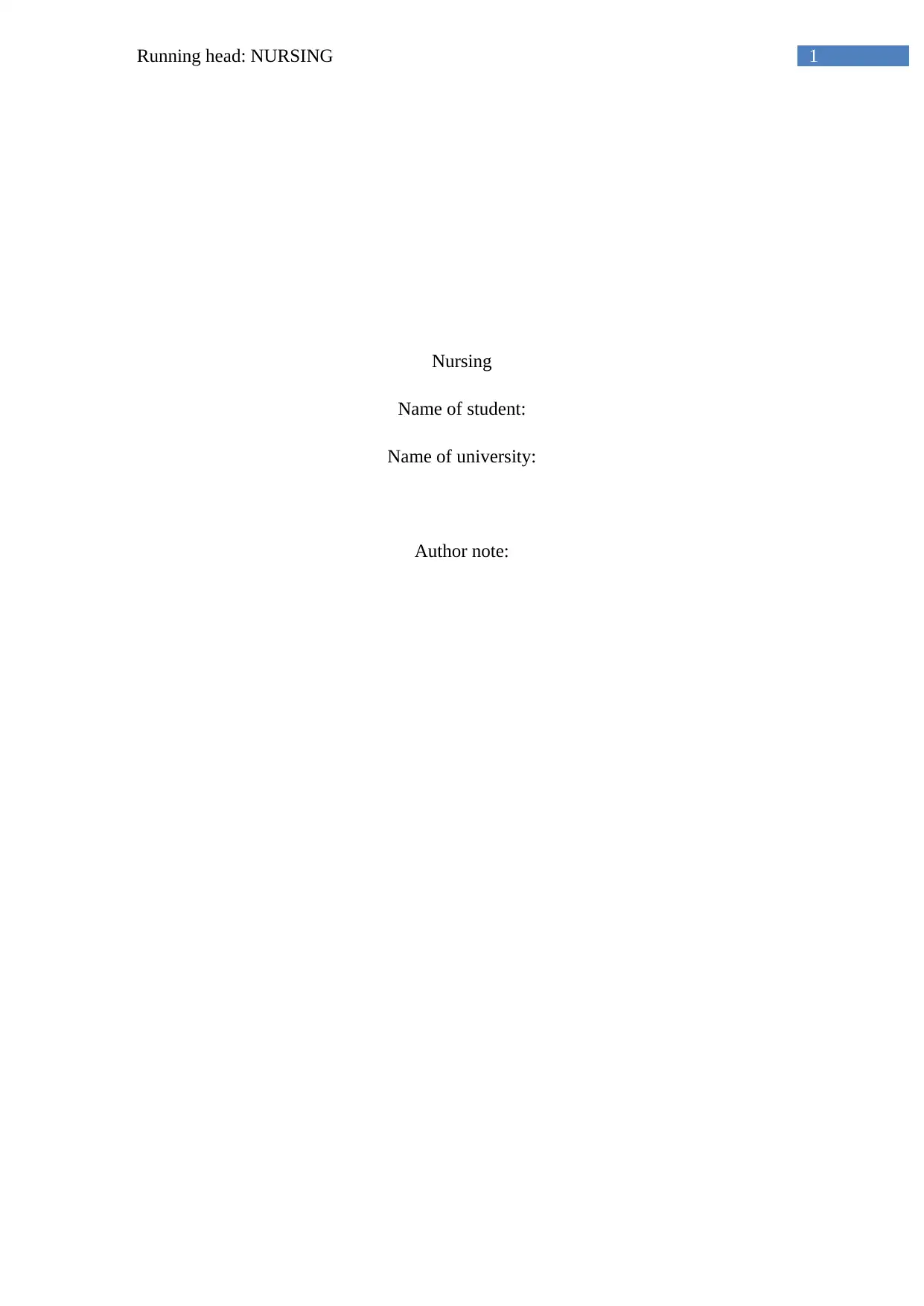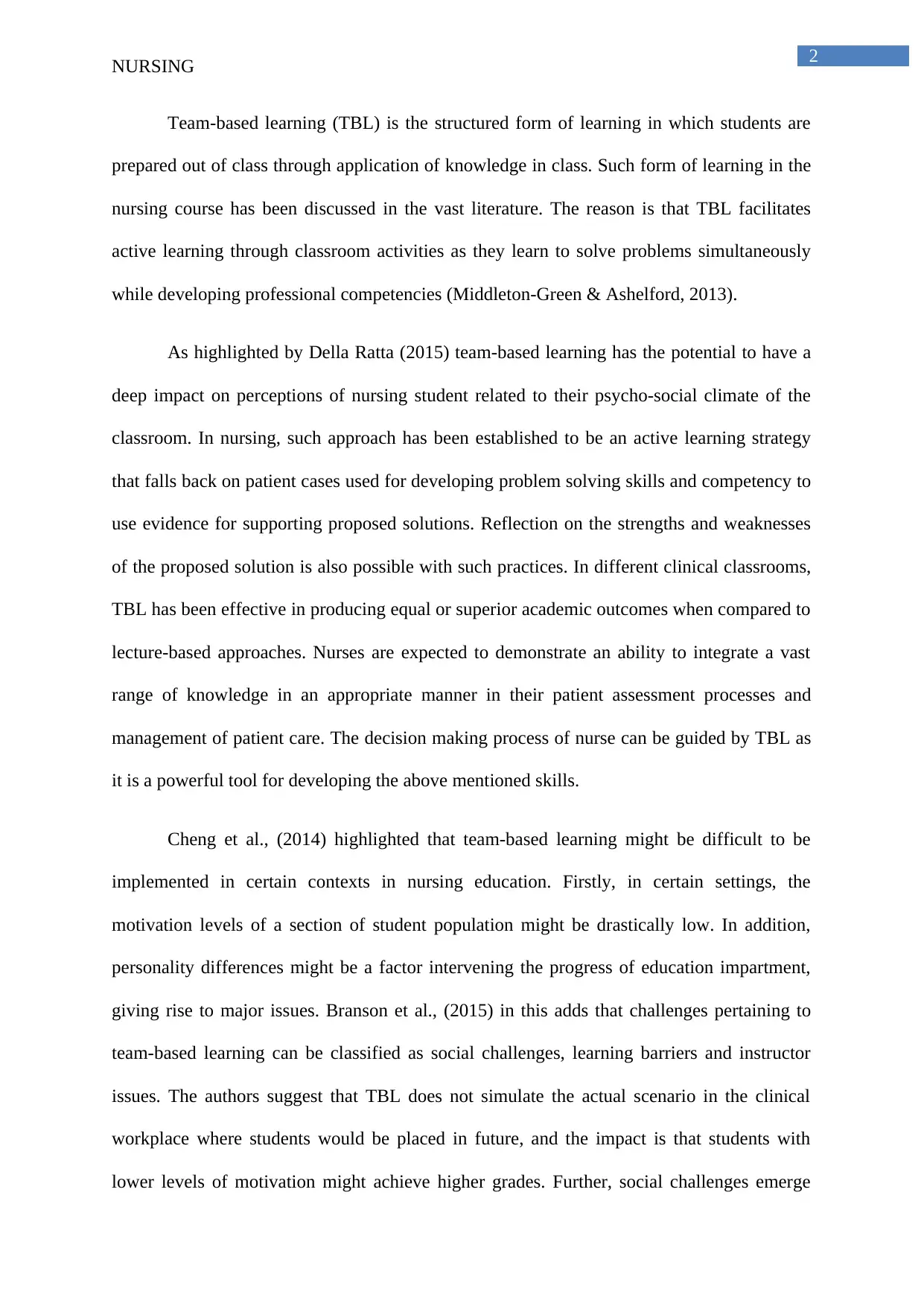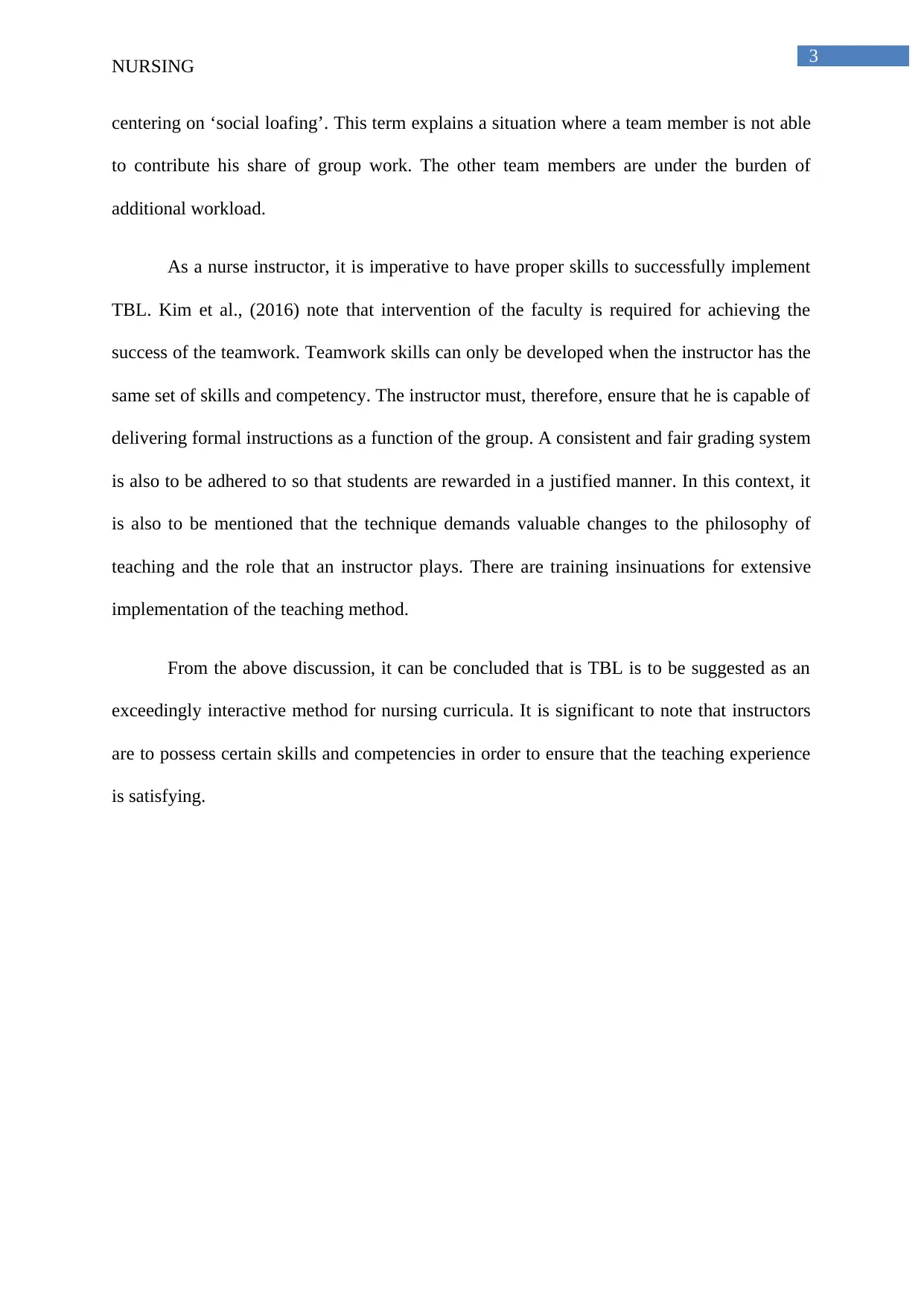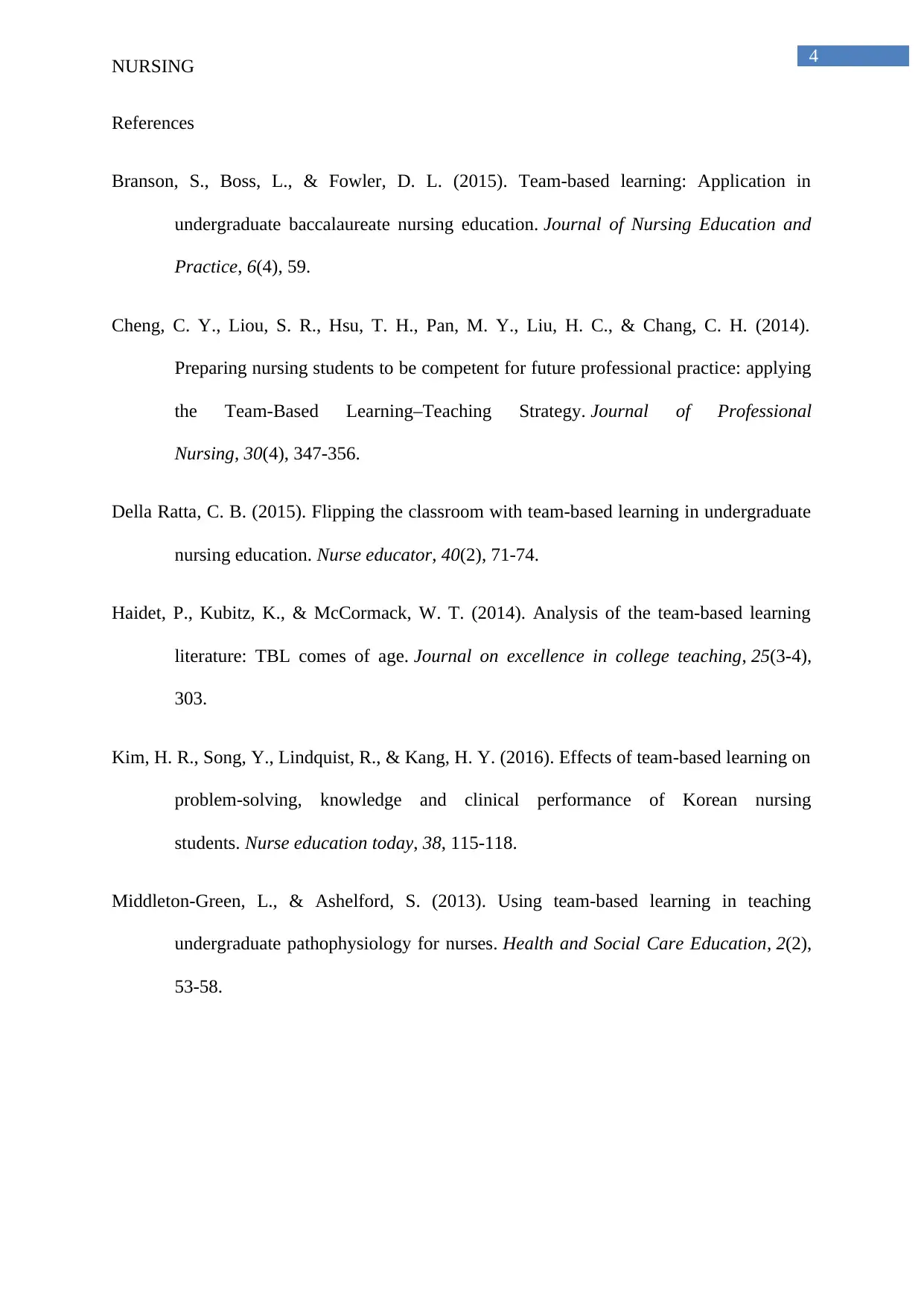Nursing Report: Team-Based Learning Implementation and Challenges
VerifiedAdded on 2020/03/16
|4
|882
|166
Report
AI Summary
This report explores the application of Team-Based Learning (TBL) in nursing education. It discusses the benefits of TBL, such as promoting active learning, problem-solving skills, and professional competency development. The report highlights the use of patient cases in TBL to enhance clinical skills and decision-making. Challenges associated with TBL implementation, including low student motivation and personality differences, are also addressed. Social challenges like 'social loafing' are examined, along with instructor issues. The report emphasizes the need for instructors to possess strong teamwork skills and a fair grading system to ensure the success of TBL. References from various authors are included to support the discussion. The report concludes that TBL is a valuable interactive method for nursing curricula, but its success depends on instructor skills and competencies.
1 out of 4











![[object Object]](/_next/static/media/star-bottom.7253800d.svg)